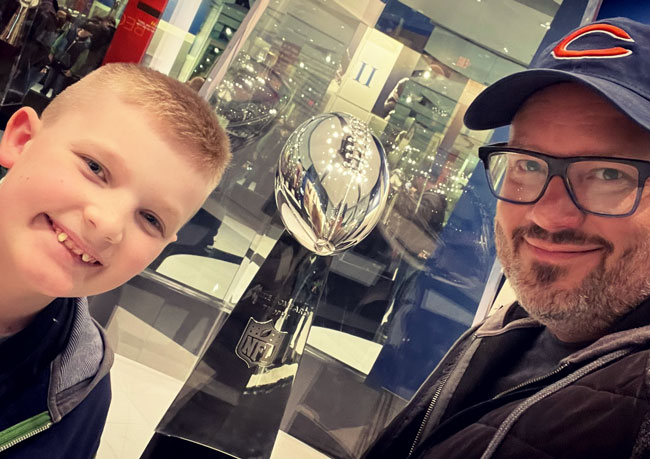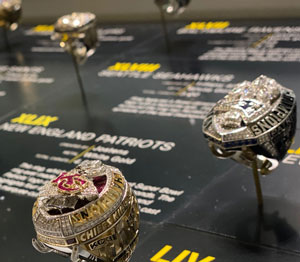
They don’t make Super Bowl rings like they used to.
A recent speaking engagement in Ohio provided me the opportunity to take my son Ben along for a side trip to Canton, home of the Pro Football Hall of Fame. One of the standout displays was its collection of Super Bowl rings.

You can see and compare every ring, from the first commemorating the Green Bay Packers’ victory in Super Bowl I, to the one awarded to the LA Rams for winning Super Bowl LVI.
The recent versions look less like rings and more like diamond-encrusted paperweights.
The Super Bowl LVI ring is shaped like the stadium, with removable(!) elements that reveal intricate details like the roof, the Infinity Screen, and the field, which is colored with remnants of the actual turf where the game was played. Each ring includes about 20 carats of white diamonds in total, the most of any sports championship ring in history.
Meanwhile, the first Super Bowl ring, designed by Vince Lombardi in 1966, was a one-carat diamond set in white gold.
It was striking to see so many life lessons crammed into one compact display.
For one, I think it’s safe to say the NFL is doing very well, especially compared to the humble founding days when owners were required to pay a $100 league entry fee. But while some might see an opportunity for a sermon on greed or the ills of capitalism, I choose to see it as an invitation to consider the progress we’ve made in our own lives. Some of my dreams are still a far way off, but I am grateful when I think about how far Kim and I have come from the early days of our marriage, with our air-conditionless apartment and a steady diet of Hamburger Helper.
Of course, each Super Bowl ring was indeed bigger and more valuable than the one that preceded it. Apparently, we human beings just can’t keep from comparing ourselves to others and trying to one-up each other.
Also, it’s clear we have a thing for chasing shiny objects. Sometimes they look like rings and trophies. Other times they look like homes, cars, job titles, and reserved parking spots. The fact that sometimes those Super Bowl rings get pawned reminds me that those shiny objects don’t lead to lasting happiness or solve all our problems.
It was an interesting display, but also a sad commentary on how out of whack our priorities are. If you follow the pattern, there’s a good chance that by 2050, players will be parking their Super Bowl “rings” in their garage.
I am not optimistic that our culture will change much by then.
But maybe we can.
We can change for the better if we spend more time being grateful for how far we’ve come and take a few moments to ask some honest questions.
Does what I’m currently chasing after hold true value, or is it merely a “shiny object” I can’t take with me?
Am I more focused on beating someone else, or besting the person I was yesterday?
In our fast-paced culture, it’s uncommon for someone to step off the treadmill long enough to ask hard questions like these.
But then again, that’s what makes real champions.